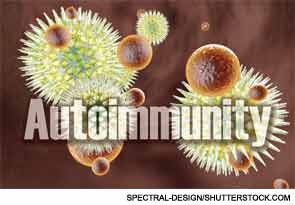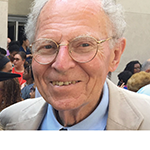
CHICAGO—The idea of autoimmunity and our relationship with the microbiome that lives on us and inside of us is an important concept that’s been evolving for millennia—one that rheumatologists in the lab today should continue to explore vigorously, said Paul Plotz, MD, keynote speaker at the ACR’s 2014 State-of-the-Art Clinical Symposium.
Dr. Plotz, the former chief of the arthritis and rheumatism branch of the National Institute of Arthritis and Musculoskeletal and Skin Diseases who has also served as acting deputy director at NIAMS, took the audience on a colorful and thought-provoking ride through the history of autoimmunity before turning his attention to the present day and to the future.
“The idea that the body must and can protect itself from the hidden dangers of the outside world—microbes, poisons—and that you learn from the experience and do it better next time, has been recognized for thousands of years,” he said.
The Past
When Thucydides wrote about the plague of Athens, he observed the way those who had managed to survive the illness were regarded by others, emboldening them as the disease struck.
“Those who had recovered showed the most compassion for the sick since they knew the same person was never struck fatally a second time, so they didn’t fear for themselves,” Dr. Plotz said.
He also mentioned King Mithridates of Pontus, who took small doses of poisons over and over again to protect himself against a fatal dose of poisoning later.
Dr. Plotz noted the guideposts in the autoimmunity field, including the smallpox inoculation that was discovered in the 17th century.
The Modern Era
The year 1890 is sometimes regarded as the beginning of the modern era of immunology. It marked the start of the period when anaphylaxis, serum sickness, blood groups and precipitin reaction were all first described.
“If, however, one needs to choose a date for the birth of the idea of autoimmunity, the idea that immune response might be directed at oneself, 1901 is irresistible as a date and it’s an inevitable choice,” Dr. Plotz said. “It’s the date of the publication by Paul Ehrlich in Germany of his brilliant insight that individuals might make antibodies against themselves that were toxic.”
The recognition that the body must have a system to protect itself against the danger that autoantibodies would pose, he added, was “not an obvious idea at all. At that point there were no readily observable natural phenomena that would even suggest it. It was a wonderful and new idea that seems to have spun out from pure thinking. It was achieved in a moment when the world was ready for it.”
Three years later, Donath and Landsteiner identified, studied and understood an autoimmune disease for the first time. The field seemed to be off and running, with autoimmunity sought and found in diseases of the brain, eyes, testicles, thyroid and other organs in the decade before the World War I.
Then, due to circumstances outside the scientific community associated with the war, a “dark age” in autoimmunity research settled in.
Eventually, though, the focus on immunology shifted to a focus on immunochemistry.
Throughout his presentation, Dr. Plotz fired off prominent names throughout autoimmunity history.
“Why am I telling you all these names?” Dr. Plotz asked. “These were all people I knew.” In other words, he said, the researchers sitting in front of him could later be the names being invoked in a speech like the one he was giving.
“It’s our chance at a brush with immortality,” Dr. Plotz said.
Dr. Plotz then turned his attention to the modern era of diseases and to the role of the microbiome. It turns out, he said, that things like improved hygiene and better water purification have probably contributed to the emergence of new diseases, because they disrupted the microbiome to which humans had grown accustomed.
“It’s been postulated that these creatures had been stimulating our T-reg cells,” he said. “And now the immune system was hunting for new targets, and these new diseases were discovered.”
It’s been found that there’s a lower incidence of asthma and eczema in children raised on farms and whose parents didn’t sterilize their pacifiers. At times of polio outbreaks, children who were kept out of public swimming pools by their parents actually ended up getting the disease more often than those allowed to swim in public pools.
Dr. Plotz said he doesn’t have a “religious” view of the human microbiome, but his remarks on the subject do reflect at least a profound appreciation for its role.
The microbiome might be best termed “commensals,” a word derived from Latin that roughly means to eat from the same table.
“They are an intimate part of us in fascinating and complex ways you have surely begun to hear about,” he said.
“The realization that we cannot separate our existence from the microbial world that coats our surfaces, that we depend on those commensals and recognize that many aspects of our lives are influenced by them—and that those commensals also depend on us—this is a huge idea and has the possibility of profoundly altering our exceptionalist view and narcissistic isolation as a species.”
Thomas R. Collins is a freelance medical writer based in Florida.

